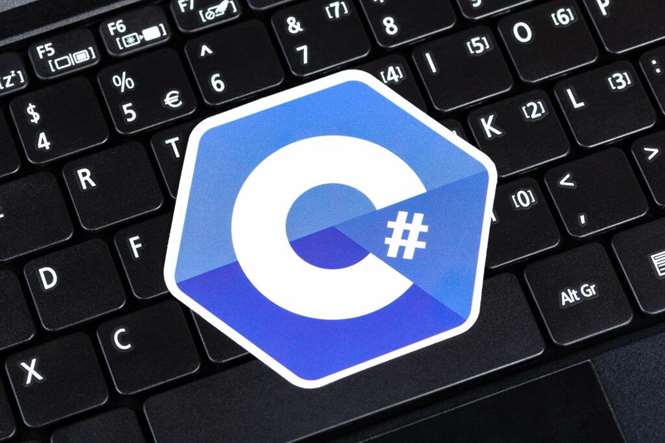Flutter Vs React Native Vs Kotlin: Which One for App Development In 2022 23
Content
This makes it easier to create an entire test suite using the official Flutter tooling. Dart is an easy language to learn and shares many traits with other popular languages such as Swift and Kotlin. If you are already familiar with other languages, you can likely become productive with Dart in a matter of weeks.
But it is becoming better as more developers adopt it quickly. It heavily relies on external development kits, which makes it difficult for developers to read and understand. Modular and intuitive architecture helps react native vs flutter developers take on other developers’ tasks and make those necessary code changes or updates easily. It uses a graphics processing unit instead of a CPU, which makes applications perform very quickly and effectively.

The apps made in React Native can work on any device and still use only one codebase. The platform can help drive savings on development costs while still delivering a polished user experience. When you pick the code to match your app, it interferes with the logic of your framework. Additionally, various native components may have 3rd-party library dependency. Usually, these libraries are outdated and can’t be maintained perfectly because of the problems that come along by default.
React Native vs. Flutter: Which is Better for Your Project?
React Native is a mobile development framework that was developed by Facebook. It’s based on JavaScript and it uses react-native-dom to create native apps for both Android and iOS devices. React Native offers many of the same features as Flutter, but there are some key differences too. In the digital era, most people prefer mobile applications to browsing websites or other platforms for various activities.
During the F8 conference of 2015, one of the most well-known frameworks of React was launched, and now it is known as React Native. It is one of the most well-known JavaScript libraries primarily concerned with front-end development. Being a subset of React, React Native allows native app development. To get started with one of these two, make sure you read through the pros and cons mentioned in this article carefully. You can also schedule a chat with our expert developers to understand better what tools would be best for your app development journey. The pros of using Flutter include its efficiency and speed when developing mobile apps.

Let us explore React Native and Flutter apps, to know which are simpler to test. Flutter is not suggested if you want minimalistic UI and depend on the use of the phone-based hardware. It is also unfavorable to crafting small-sized and instantaneous apps through the Flutter framework. If your application requires backing the 3D touch, Flutter is not recommended.
Pros and Cons of Flutter
This explicit clash is also observed among the powerful cross-platform development frameworks, specifically across React Native vs. Flutter. React Native app development allows the developer’s changes to immediately https://globalcloudteam.com/ reflect on the application, allowing the developer to make faster changes. Any developer with prior experience in React Native and Java can develop a complete application in less time with Flutter.
So, a developer can see changes instantly, without rebuilding the app. Rather, Flutter has its own set of custom widgets, rendered and managed by the framework’s graphics engine . Users will see different UI components from typical native apps, but that isn’t necessarily a disadvantage. With Flutter, developers can write just one codebase for two applications – covering both iOS and Android platforms.
Thus, it is safe to say that nearly 70% of the world’s population uses a smartphone in one way or another. A significant time is saved in activities such as development and compilation. If yes, then programming with Flutter will be a walk in the park. Well, that depends on the specifics of your project and the balance of your team’s skills. Mainly because React Native uses JavaScript whereas I was new to Dart – the language used by Flutter.
- That said, you’ll still have to run manual testing at a similar level as with native programming – as your QA specialists will have to check both apps on each platform, by hand.
- When you develop desktop apps with Flutter, you need to compile Flutter source code to a native Windows, Linux desktop app, or macOS.
- This number is further projected to increase to 7.3 billion in 2025.
- This feature reveals changes instantly with no loss of the app store.
- It requires you to provide additional security, especially if you are looking for banking or financial apps where it deals with confidential data.
- The overall goal with Flutter is to be a unified UI toolkit on all major platforms.
Thousands of experts remain eager to assist budding developers with their knowledge and expertise. On the other hand, it is slightly difficult to debug and maintain the React Native code. You may encounter compatibility issues due to the usage of 3rd party libraries. If you have an adequate number of seasoned JavaScript developers, then it is the best idea to use React Native to develop cross-platform apps. React Native is still in the beta phase even so many years after its launch.
Summary of pros and cons
Learning Dart language is easy for developers, as it is quite different from JavaScript, Java, C++, and other popular languages. However, once you learn it, then working with Flutter becomes very easy. React Native uses JavaScript language, which is undoubtedly one of the most popular programming languages in the world. If your applications demand different designs and architectures for a different set of platforms. Since the developers need to code just once, it allows them to develop apps quickly with fewer resources.
With Flutter, this app’s size got influenced by the Virtual Machine of the C/C++ engine and Dart. Flutter holds the caliber to self-clutch all codes and the assets to avoid size concerns. Also, using a unique tag, such as split-debug-info, you can lower down the code size. It’s said that Futter is not perfect to handle more complex projects. Although, startups may accept Flutter as a good solution for developing Minimal Valuable Product .

React Native is an immensely popular JavaScript-based mobile app development framework. It allows the seamless development of natively rendered mobile apps for both iOS and Android platforms using the same codebase. Google has nailed it once again with Flutter, the mobile application development platform.
Which framework is better?
Flutter is a fairly new framework which is just gaining popularity. Therefore, the support and the community size is relatively less, given the current rate of growth it is sure to keep up with the competitors. With the rapid growth of technologies in the latter-day, mobile phones have become an integral part of human life. There are over 2.7 billion smartphone users around the world and to see the massive growth in the mobile app industry is hardly any surprise. If you are looking for a lightweight framework that is fast and efficient, then Flutter is the best option. If you are looking for a framework that can handle large projects, React Native may be the better choice.

In today’s business, the world of competition has become online. With a good mobile application, you can reach your business to a large number of customers. However, Flutter, based on a single code base, will produce both iOS and Android apps.
All that is required is this single codebase for both of the platforms. React Native helps the react native developers to build Native-like applications. A single codebase can be used to develop platform-specific versions of components. The fast refresh feature immediately reflects the changes made in the code. Cross-platform app development is gaining popularity in today’s time. React Native & Flutter – two popular programming languages are ruling in 2022.
Next is, Flutter.
This framework allows you to Integrate 90% of the Native framework for reusing the codes for cross-platform applications. Also reuse the web application codes for creating a mobile app, if they are written in React. Whereas Flutter was designed as a lightweight alternative to React, it can be used to build smaller apps and prototypes too. The framework uses Skia, a 2D graphics rendering library, and the Dart language VM in a platform-specific shell. It compiles Dart’s source code ahead of time, creating native code.
Company
Flutter offers its very own gadgets that are appealing, quick & adjustable, and are drawn with its own higher-quality rendering motor. Flutter’s architecture is based on reactive programming that is very prominent nowadays. The first stable version of the framework Flutter 1.0 was released on 4 Dec 2018.
React Native started as an internal hackathon project at Facebook back in 2013, released to the public in 2015. A JavaScript framework built using the React library, React Native helps you ship IOS and Android apps with a single code base. Flutter and React Native are the two most popular cross-platform frameworks on the market today that focus on mobile app development and beyond. So if you are curious about developing your next project with React Native frameworks, this is the right time to start.
The difference between the performances of these two frameworks is quite debatable. Their communities are separated when it comes to ‘performance,’ as they are perfect when speed and agility are considered. React Native may provide less modularity support as compared to Flutter. IOS, Android, and Reactjs developers may find it tough to correlate with each other. With no expertise, different teams may have problems with code fragmentation in React Native.
Комментировать (0)